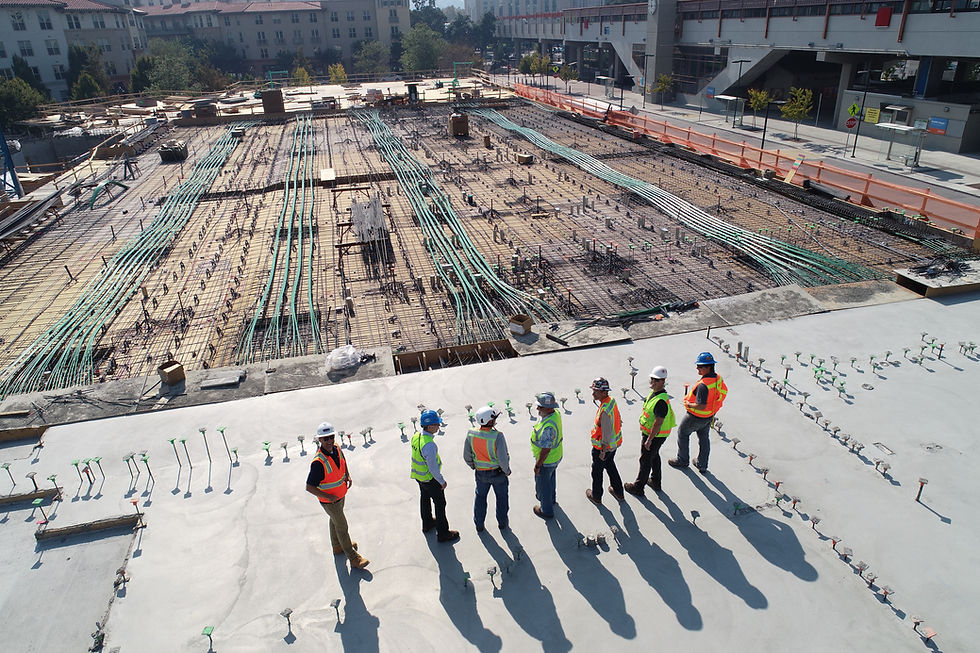
The global construction industry is a massive enterprise. Like companies in many other industries, construction companies are wary of “disruptive technologies”; technologies whose adoption significantly changes the way businesses, or entire industries, operate. 3D printing and others have been promoted as a potential disruptor. Construction projects suffer from low productivity and risks pertaining to schedules, quality, and costs. Over recent decades, construction productivity has improved by a mere one percent1. But many companies, like Nvolve Technologies, boost productivity through the digitalization of construction workflows. And the focus is on two areas with great potential savings and increased profits; an advanced Building Information Model (“BIM”) model and new building materials that reduce carbon emissions.

Companies like Nvolve use BIM to support all aspects of a project, from concept to delivery, but using a standard BIM model is not enough to satisfy sustainability requirements including planet-safe materials, energy savings, and cost reduction.

With an increased focus on sustainability including planet-safe materials, energy savings, and cost reduction, using the standard BIM model is no longer sufficient. An example is a sustainable building project that is constructed of materials that could decrease environmental impacts, such as energy usage, during the life-cycle of the building. Advanced BIM models have been identified as an effective tool for the virtual analysis of a building’s performance in the design stage to determine the designs that have the largest impact on the building’s performance.
Simulating the future and impacting on costs.
The main aim of using an advanced BIM model is analyzing and reducing the energy consumption of buildings. In the design and pre-construction stages. The BIM model should be taken into account as a comprehensive simulation method that can be used to create opportunities to assess and improve the performances of buildings. This integration of the BIM concept into the design stage can be used to select the best green building designs and reduce the need for later design modifications that require extra time and cost. This type of BIM model is useful to architects and building designers as they use the BIM concept and tools to develop energy-efficient buildings in the future with the goal of achieving sustainable development for society.
The exploitation and utilization of energy resources have caused severe ecological and environmental problems, including the production of emissions that contribute to global warming. The construction industry consumes up to 50% of mineral resources excavated from nature, generates about 33% of CO2 present in the atmosphere, and is responsible for 40% of total global energy through both construction and operational emissions*1. Out of necessity, construction companies have been forced to investigate new methods of practice and how best to apply resource-efficient techniques from the extraction of the raw materials to the demolition and disposal of its components.
The realization that practices now face globalization, sustainability, and environmental concerns, as well as ever-changing legislation requirements and new skills needed for the information age, has resulted in technologies like an advanced BIM model in to becoming a key enabler in navigating these concerns*2..
European sustainable research partners are looking at potential solutions like geopolymer-based and low carbon construction materials. An example is replacing the use of cement and masonry with a high-strength masonry along with a low carbon footprint using natural mineral-based geopolymers.

The technology allows for natural clays found readily all over the planet to be turned into reliable masonry products and offers a sustainable alternative to traditional concrete masonry while offering twice the strength of ordinary concrete — and also having a demonstrated resistance to water and chemical erosion.
Traditional concrete masonry has a high carbon footprint due to its reliance on Portland cement, a material responsible for 6% of the world’s CO2 emissions. Geopolymers are a new technology that provides an alternative to Portland cement used in concrete and masonry. Until now, geopolymers have mostly relied on fly ash, a byproduct of burning coal, or blast furnace slag, a byproduct of iron and steel production. These industrial waste products are available only adjacent to coal-fired power plants and steel production facilities, and the world does not produce enough to meet the demand for concrete products.
Nvolve Technologies, like many others, has at its heart transformative and massively deployable innovation. We create new technologies and processes to help this industry to transition to a new global economy, one that is shaped by green, sustainable materials, better-built structures using ordinary labor, decarbonization, design/architect/build digitization, mass customization, servitization, greater use of a circular economy methodology and resource efficiency.
1.Ajayi et al., 2016 and Zhou and Azar, 2018.
2.Jaradet, 2014


Comments